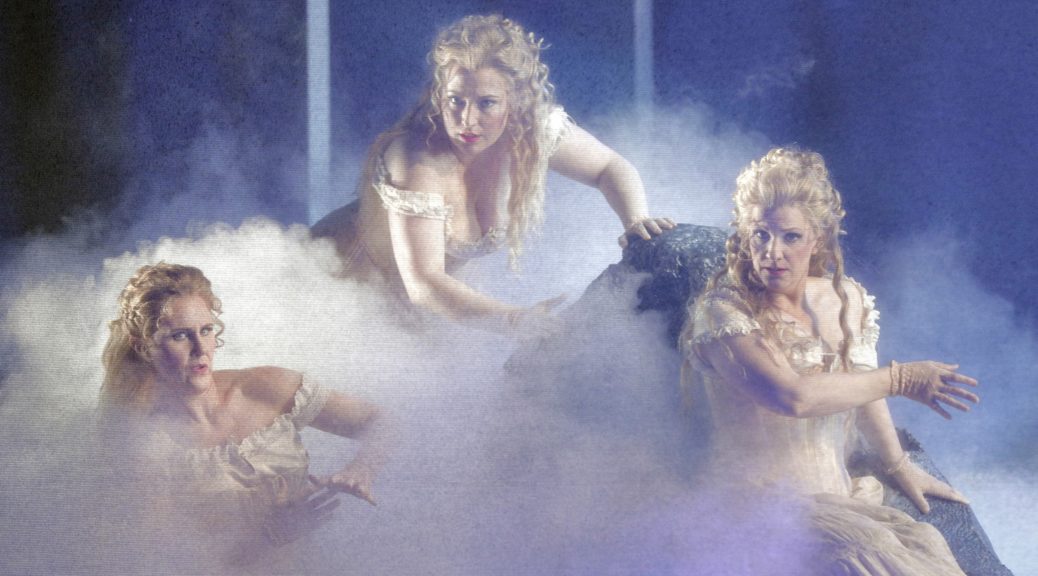
THE WAGNER ‘RING:’ THE GREATEST SHOW
The greatest show on earth? Now that a certain circus is no more, the greatest show is arguably Richard Wagner’s “Ring” cycle, 17 hours of potent song and drama spread over four nights. Though presented at the S.F. Opera every decade or so, the audience for these masterful 19th-century operas seems limitless. Going to the first-night “Rheingold” June 19 I was impressed that the Opera House was once again sold-out. The gent next to me had actually flown in for the week from New York. This, despite a 150-minute performance span without intermission.
All that fuss over fantasies of Germanic/Nordic gods? Why not? Wagner gives us gods with very human emotions and reactions in their wheeling and dealing, coupled with widespread greed, lust, deceit, theft, curses, even murder. In sum, it’s a scathing social critique, regardless of century. (The costumes now suggest a strong early-20th-century setting.) Central is the spear-toting No. 1 god Wotan, whose modest goal is world domination once he finishes building his castle in the sky, Valhalla.
It’s the old “Ring” production back again from 2011, with a fresh look, using contemporary technology in lighting and stagecraft. Also the subordinate role of the women has been improved here and there. Wotan’s wife Fricka, normally a nag and a scold representing social convention, is by turns kittenish, even sexy in discussions with hubby. And the alluring sister-in-law Freia, whom Wotan has dealt off as chattel for the Valhalla payment to the giant builders, is now an overemoting offspring almost chewing up the scenery.
Overall, this is a superior show under Director Francesca Zambello, with brilliant mobile projections—now abstract, now showing Alpine peaks in the sky swathed in clouds as created by Jan Hartley and S. Katy Tucker. The equally voluptuous orchestral score under Donald Runnicles’s leftie baton carries the seamless action so well that only snarky music critics would point out that the pit orchestra size is smaller than Wagner’s dictates.
No matter, it still works very very well. The key to the “Ring” is Richard Wagner’s versatility and genius, writing the extraordinarily elaborate libretti, then penning the score loaded with Leitmotifs—recurrent themes on Renunciation, the Hero, Immolation and the like. And he called on a new breed of powerful singer, with volume like a trombone, to project into the farthest corners.
And the “Ring” is better than ever, not just because of the projection technique. Supertitles provide on-going English translations of the German. And, where a half century ago the Wagnerians stood and sang and did little else, the Zambello package has a thousand movement cues and character interactions comparable to a drama in the theater.
The voices here are large, the waistlines pretty trim, and the drama compelling. The singers, repeating their roles in the subsequent operas, include bass Greer Grimsley (Wotan), Jamie Barton (Fricka), tenor Stefan Margita (as Loge, the brightest idea man of them all) and the amazing newcomer in the role of the villainous Alberich, Falk Stuckmann. All working through an array of magic spells, transformations, and disappearing acts requiring a healthy dose of stage magic. And you come away totally mesmerized.
Richard Wagner’s ”Das Rheingold,” No. One in the four “Ring” cycle operas. San Francisco Opera at the Opera House, S.F., through July 1, in German. For info: go online.